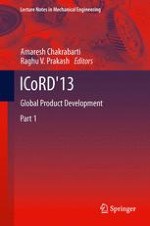2013 | OriginalPaper | Chapter
Extracting Product Characters Which Communicate Eco-Efficiency: Application of Product Semantics to Design Intrinsic Features of Eco-Efficient Home Appliances
Activate our intelligent search to find suitable subject content or patents.
Select sections of text to find matching patents with Artificial Intelligence. powered by
Select sections of text to find additional relevant content using AI-assisted search. powered by
